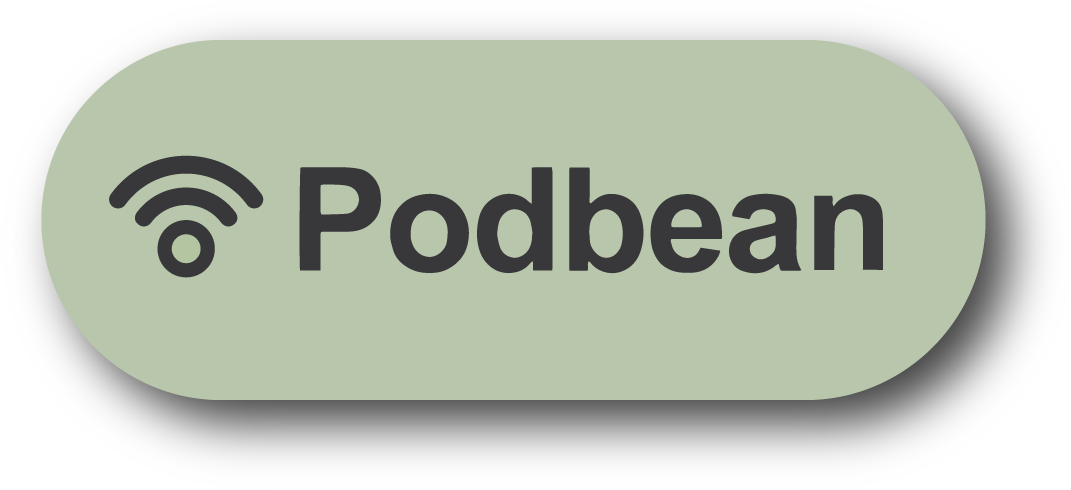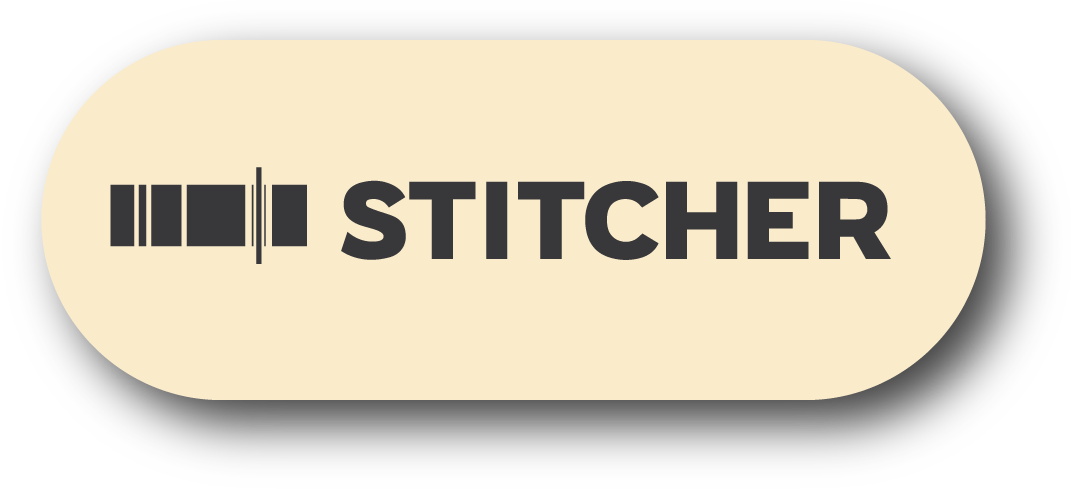#424 - DREW LANG, Founding Principal of Lang Studio and Founder of Brick & Wonder
SUMMARY
This week David and Marina of FAME Architecture & Design are joined by Drew Lang, founding principal of Lang Studio and Founder of Brick & Wonder. The three discussed Drew’s early childhood and education; architects losing passion; alignment and communicating with clients; the architecture community & exchanging with peers; Brick & Wonder philosophy and operations; networking; and more. Enjoy!
ABOUT DREW
Drew Lang is the founding principal of Lang Studio where he works closely with design teams, clients, and collaborators to create architecture with enduring presence and purpose in cities, and across natural landscapes.
Drew was born in New Orleans where he developed an early passion for both nature and architecture. After completing his architectural training at Yale University, Drew settled in New York City, where his practice is now based.
Drew is an active advocate for positive collaboration and founded a community called Brick & Wonder dedicated to supporting and connecting real estate and design professionals.
TIMESTAMPS
(00:00) Drew's early childhood & education.
(11:32) Architects losing passion & alignment with clients.
“One of the things that I found to be extremely helpful is to make it clear to clients how they need to be accountable to us and to hold them to that. It's very, very hard to do, especially early on in one's career. But if I don’t do that, things go awry without fail. It's easy to lose track of what everyone's roles are and what people are responsible for doing. I think it is part of our job to guide the client and tell them what they need to do.” (19:42)
(21:57) Communicating with clients.
“No matter what it is, it comes back to communication. Whether it's an issue of payment, design decision, programmatic clarity, budget clarity, or schedule clarity. It's our job to ask the right questions and to explain to the client why it's important to have conversations about these things. How often have clients come back to us and say, “I told you our budget. Why did you keep asking me for more and more as you watched the budget go up and not saying anything until now?” It's our job to be proactive and stay many, many steps ahead.” (22:41)
(29:58) Community in Architecture & exchanging with peers.
“If we can gather a thoughtful and talented group of professionals who work across the built environment, then everybody is very well served, and everyone's problems start to dissipate. Because you have ready solutions that’s a phone call away, or a warm introduction away as we're part of the same community in Brick & Wonder. It's networking, but networking of a different sort. We all have negative associations with networking and Brick & Wonder is trying to amend that. People come into the community, and they feel good. They feel welcome and there's an understanding that people are there to help you. Ultimately, it is about helping people grow their businesses where they want to grow them and do project collaborations with the kind of people that they want to collaborate with.” (32:23)
(37:59) About Brick and Wonder.
(52:35) Short term vs long term networking.
(57:03) Location of Brick & Wonder operations.
“That term leapfrog is one we use all the time because we think of Brick & Wonder as a vehicle for everybody to leapfrog where they want to go, no matter where they're coming from. As they participate in the Brick & Wonder community, they skip some steps that they would otherwise have to take. We all know what it's like to reinvent the wheel and slog through figuring out how to go where we want to go. Wouldn't it be better to be able to tap people who have the know-how, the resources, and the energy and enthusiasm that can help take you there because they know how to do it? You don’t have to figure it out yourself.” (01:01:23)
(01:03:23) Brick & Wonder Members vetting process.
(01:11:12) How Brick & Wonder was founded.
“Brick & Wonder is set up to solve this collaboration problem. Who are you going to work with and not going to work with? I get a lot of satisfaction from introducing good people to each other and seeing them succeed. So, I thought, “How can I create a formal framework that makes it easier to do that?” In the Brick & Wonder framework, it's much easier because there's a built-in system of accountability and trust. When you introduce colleagues to each other or refer a colleague to a client, you are putting your reputation at stake. We all do that, and we know what that's like. One of the reasons why people are so fearful and have a scarcity mindset is because the downside is too great. So, we're mitigating that and solving that problem too. That's why I started Brick & Wonder.” (01:14:27)
(01:18:21) Drew's favorite building.
HAVE QUESTIONS OR SUGGESTIONS?
TEXT/CALL OUR HOTLINE
213-222-6950
#423 - OUR FAILURES IN ARCHITECTURE
SUMMARY
This week David and Marina of FAME Architecture & Design discuss their failures in architecture and advice for aspiring architects. The two touched on design exploration during university; completing assignments on time; having too many ideas; not asking enough questions; external distractions; advocating for yourself as a young professional; not committing to an office; dealing with perfectionism; getting stuck on a certain project phase; too compliant with client demands; explaining project to non-architects; and more. Enjoy!
TIMESTAMPS
(00:00) Introduction.
(01:18) Completing assignment requirements and sacrificing design exploration.
(12:43) Not completing assignments.
(22:38) Struggling with too many ideas.
“One truth with any creative project is the clarity of the statement. If you can summarize a project into one sentence. What is it doing? How is it doing it? The project can be very complex, confusing, ugly, or monstrous… It could be anything, but it needs to have clarity. As one matures, the work tends to become clearer because partly you're not forcing things. When you're younger, you have all these ideas you want to get out on paper…because you're excited and you want to get it out there. But you can't force it. If it doesn't belong in that project, don't shove it in the project.” (31:14)
(32:39) Not trusting teachers.
(37:59) Not asking enough questions.
“When I first started [working in architecture], I strongly felt that I needed to pretend like I knew more than I did to secure a position where I got paid enough money. I was always afraid that if I showed [my lack of knowledge], I was potentially going to be let go or not be hired. When it comes to a feast or famine mindset, because your best hope is to make $38,000 a year, you do everything you can to get that and then hold on to it. It was a survival mechanism that I should not have used, but it was a survival mechanism. I was afraid and thought, “I can't ask that.” It's a mistake because, of course, you're only like 22. You don't know anything.” (39:58)
(43:52) External distractions.
(50:06) Advocating for yourself as a young professional.
“As a young professional, you might feel like you don't deserve things because you're young and inexperienced. [It’s hard to] advocate for yourself, ask for a raise, or ask for things you think would improve your learning experience and career. I feel like the first few years I was taking the back seat. I thought, “I can’t ask for that. I started a year ago. I'm just a young designer. I can’t ask for a raise. I can’t ask for more responsibility.” Then at some point, you see someone else in the office who did it, who started maybe after you and they got [the things you were afraid to ask for]. Then you're pissed off because you understand that if you don't ask for stuff, it's never going to come to you. Then your perspective changes.” (50:20)
(52:26) Not committing to an office.
(56:39) Everyone has their shortcomings and talents.
(59:43) The perfectionist mindset.
(01:08:12) Getting stuck in the design process.
(01:11:42) Complying with client demands.
“Sometimes architects comply with clients’ demands too much. I think that pushing back is something that we don't often do as a profession. For example, saying, “I need more time.” One of the biggest failures for anyone who is dedicated to this profession is the failure to never turn off your brain, and never allow enough breathing room for the machine to restart, reset, and work at full capacity. Pushing yourself to exhaustion is too common.” (01:11:45)
(01:14:51) Explaining architecture to non-architects.
“You have to choose your words and structure them in a manner that makes sense for the audience. Always. However, it's a mistake to only create the presentation from the audience’s perspective. I think it's important to talk about elements that are important to the project, even if the audience might not understand it. Of course, you should try to explain it and not write it off as being incomprehensible. But we get into dangerous territory if we reverse it too much. You can't close the gap between architects and non-architects if you change the language too much and remove portions of the design presentation.” (01:20:23)
HAVE QUESTIONS OR SUGGESTIONS?
TEXT/CALL OUR HOTLINE
213-222-6950
#422 - MORGAN SYKES JAYBUSH, director of hospitality projects at Omgivning
SUMMARY
This week David and Marina of FAME Architecture & Design are joined by Morgan Sykes Jaybush, Director of Hospitality Projects in Omgivning. The three discussed Morgan’s early childhood, education, and career; his interest in adaptive reuse; the market for adaptive reuse; types of projects; financial viability; the importance of adaptive reuse; interesting discoveries; challenges of working with historic buildings; employee alignment with firm’s mission statement, and more. Enjoy!
ABOUT MORGAN
A fourth-generation Angeleno, Morgan Sykes Jaybush is one of the original members of Omgivning. He grew up in and around downtown LA and has been a part of its revitalization for quite a while, so he's a natural fit for our work. He escaped big city life for coastal living while in architecture school at Cal Poly San Luis Obispo, and then worked at the Peggy Guggenheim Collection in Venice, Italy, for several years.
Hop in his '66 Cutlass Supreme to cruise over to his house, where you'll find his collection of vintage designer chairs and clocks. He's the most upscale and organized hoarder you'll ever meet.
TIMESTAMPS
(00:00) Early childhood & background.
(03:31) Early architecture education & career.
(18:15) Interest in adaptive reuse projects.
(36:22) Types of adaptive reuse projects and financial viability.
(43:27) Why is adaptive reuse important?
“Putting a whole building into the landfill is terrible for the carbon footprint, [especially if it's a high-rise building.] There are also historical and neighborhood cultural reasons to try to keep some of the existing [urban] fabric because it makes the place where we live richer. There are so many Type V buildings being built across the city that it's hard to tell the difference between them. I think you lose the uniqueness of different neighborhoods when there is so much of the same stock being built everywhere. [I worked on] this old craftsman house in Silver Lake, which was used for 50 - 60 years as a florist shop, and this Japanese family lived there and ran the shop. Now, we're turning that into a hotel and restaurant bar. It's opening that up as a space that people remember, but they can also go and experience it forever now.” (43:48)
“It's not only people that have been [in a city] for a long time who feel connected with its history. Even in a place you haven't been to, you feel that warmth when you go into an old place that's been renovated and turned into something new and cool. There's still a connection that you have with it that's different than going into a new construction building that has beautiful, sleek concrete but it's cold in some ways. It doesn't mean that [modern buildings] don’t have a place in the city. This place is big enough for all these things to happen.” (47:18)
(51:51) Interesting discovery in adaptive reuse projects.
(55:27) Dealing with challenges in adaptive reuse projects.
“Honestly, the historic building codes are not super helpful, but there are things that we can use from that. Almost every time the stairs are not code-compliant, but we can write a modification to allow that. It allows us not to bring the windows up to [the new building code]. It allows us to use older versions of the mechanical code. There are a lot of challenges. A lot of times [adaptive reuse] are so expensive to do, that we get historic tax credits with the National Park Service. So that gives you around 20% of your construction cost back in tax credits. It's great, especially when some projects cost $60 million.” (56:00)
(59:54) Architecture firm size & work environment.
(01:07:31) Employee's alignment with office mission statement.
(01:09:51) Convincing clients about adaptive reuse.
(01:17:10) Morgan's Favorite Building.
HAVE QUESTIONS OR SUGGESTIONS?
TEXT/CALL OUR HOTLINE
213-222-6950
#421 - GUIDE TO ARCHITECTURE FEES
SUMMARY
This week David and Marina of FAME Architecture & Design discuss the different types of architecture fee structures including the percentage of construction cost model; the fixed fee model; the hourly fee structure; and hybrid fee structures. The two also cover the benefits and challenges of each fee structure; interior design fees; why architect’s fees vary greatly; the amount of work involved in each project phase; and more. Enjoy!
TIMESTAMPS
(00:00) Types of Fee Structures.
(00:44) Percentage of construction cost.
(14:29) Fixed fee model.
“When comparing architects’ fees, most of the time, the reason why a fee will be significantly higher or lower than another is that there is a quantifiable difference in the fees and services they offer and the quality of those services. It's not because someone's just cheaper to be cheaper, more expensive to be more expensive, or not necessarily that someone's way more talented than another person. It has to do with the quantifiable difference in their services.
For any client looking to hire an architect, you must know the services they're providing and the quality of those services. You have to, have to, have to know it because this project could cost millions of dollars. It's going to take years. It's a huge commitment. You want to spend a couple of weeks doing that little bit of research to find out what services they're offering and the quality of the services. ” (16:01)
(18:24) Be aware of fixed fee model inclusions and exclusions.
(27:39) Benefits of fixed fee model.
(31:35) Challenges of fixed fee model.
“If you know as a client that you have a hard time in life making choices, it’s most likely that you're going to have a hard time making choices on a project. So, if you're limited to one option for the design of each project element, that's probably not going to work out for you. It's hard for the architect to [provide multiple design options] when they are an additional service and ask for extra payment. It kills the buzz of the agreed fixed fee at the beginning because now the project is going beyond the agreed number.” (32:57)
(36:41) Hourly fee structure.
“When you have an architect who charges hourly, they should give you a ballpark idea of how much the total fee should be. That goes back to using the percentage of construction cost structure to establish that benchmark. So even if you go with an hourly fee, your architect probably has an idea of the range it's going to be. As you move along, they should keep you updated on where you are with the fee that’s spent so far compared to what was estimated and how much work is left.” (40:17)
“The hourly fee structure is not as suitable for clients who don't trust the people they're working with, or if they want to manage the hours of a creative. Design is not always efficient. It could be efficient to draw and model, but to get to the design… it's not an efficient process. That's just the nature of what creation is.” (45:05)
(48:15) Hybrid fee structure.
(55:29) Interior Design fees.
(01:00:03) Why architect's fees vary greatly.
(01:01:54) How much work takes place in each phase.
(01:03:49) Summary.
“You always want to hire the professional that's the best fit for you, and the one who's qualified more than anything else. So, if you're talking to an architect and they have a different fee structure than the other one, but you don’t like their fee structure, then tell them or just deal with it. Always go with the architect who you like as a person and who you trust. That's the most important thing, always. That trumps everything else, including the fee amount to a degree… It's a mistake for clients to compare two architects and say, “Well, there's a 2% difference in fees. I like the more expensive one better [But I’ll go with the cheaper one.” Go with the one that's 2% more. You don't want to roll that dice on a project that is going to be this close of a relationship for years.” (01:04:33)
HAVE QUESTIONS OR SUGGESTIONS?
TEXT/CALL OUR HOTLINE
213-222-6950
#420 - ADAM BRAWER, Founder of Adam Brawer Estates
SUMMARY
This week David and Marina of FAME Architecture & Design are joined by Adam Brawer, Founder of Adam Brawer Estates. The three discussed Adam’s childhood home; his early career and education; previous career as a music, film, and TV producer; transitioning from the entertainment industry to real estate agent; communicating and managing expectations with clients; gamifying real estate and bringing good energy; spiritual cleansing in real estate; and more. Enjoy!
ABOUT ADAM
Adam Brawer is an authority on the Los Angeles residential real estate market, having called Los Angeles home for the past two decades. Adam's knowledge, meticulous attention to detail, and best-in-class client service allow him to offer an exceptional experience when buying or selling property. Combining his personal and professional network with a high-level entertainment background, Adam helps clients prepare and market their homes with a Hollywood flair, ensuring each property is uniquely positioned. Offering expert guidance throughout each phase of the process, Adam looks at each sale as a partnership where he and his clients are fully aligned in the outcome. Adam is often praised by clients for selling their properties for above market value in the shortest period of time.
Depending on each client's unique circumstances, Adam builds a team around them ensuring their needs are met. Whether it is ground-up development, renovation consultation, or real estate investment guidance, Adam and his team provide a complete custom service. This service-based approach has led to extraordinary results, as evidenced by his remarkable track record and client loyalty.
As a former film producer, Adam believes storytelling is an essential aspect of marketing, so he weaves narratives into every campaign. Known to some as "The Spiritual Realtor" Adam's approach is unique, often employing energy healers and burning sage in homes prior to listing them. When not selling property, Adam is known for his healthy lifestyle; yoga, tennis, hikes, breathwork, cold plunges, and meditation.
TIMESTAMPS
(00:00) Introduction.
(08:18) Adam's childhood home, early career, and education.
(21:51) Music background & producer experience.
(32:53) Transition from entertainment to real estate.
(41:25) Film producers & architects similarities
(46:05) Communication & managing expectations with clients.
“Managing expectations is extraordinarily important. There are several milestones in purchasing or selling a home. Most people think when a 2 million dollar offer for a home is accepted, it'll stay at 2 million dollars when you close escrow. But there's always a second negotiation or more during inspections and that will bring down the closing price from the initial offer. So, language is extremely important in how you frame a conversation and deliver the message. It could be the same message delivered 70 different ways, and you'll have 70 different reactions.” (46:46)
(52:54) Gamifying real estate.
“When I gamify something, the stakes feel lower. The process feels more enjoyable, and I'm no longer as stressed about a specific deal. It’s more like moving pieces on a board and having fun. I would take a step back and have more of an omniscient perspective on what's going on, and then I would dive in with enthusiasm, a lot of energy, and a much faster pace. The stakes didn't feel quite as high because it felt like I was playing a game instead of sinking or swimming in real life. So, I would act a little bit more fearlessly. I would take bigger risks. I would communicate differently because I wasn't as concerned about how something would be received. I emboldened myself with more confidence because I was less scared.” (53:14)
“I've realized in this game of real estate, the more I am myself, the better I play the game. I have this motto of “ABC - not always closing, but always celebrating”. The spirit of celebration is contagious. Everybody wants to be involved in the celebration. So, I'll create open house events that are like a celebration with champagne, sound baths, live music, and food to create an experience for the buyers to step into so that they can feel the home differently and be part of a celebration. It's led to some incredible results.” (55:03)
“The energy at home is priceless. If it's a divorce sale or a death in the home, depending on the severity of the situation, I either set intentions and sage the entire home myself to clear the energy or if it's a rough space, like a contentious divorce, I have what's called a home healer. She brings smudges, drums, and native chanting. She is like an energetic seance in the home to clear it out before I list it so that it's a fresh start and a blank slate. Any stagnant and heavy energy is dispelled, and it’s no longer part of the home.” (58:48)
(01:02:27) Meeting clients at their level of consciousness & spiritual cleansing.
“If a client wants to micromanage a sale, I try to sit them down and explain, “This is what I do best. Allow me to do my best work. I will get you the most money, the best buyer, the best terms. We'll close quickly. You'll be really happy.” …For these clients, I'll lead them through breathwork and guided meditation to relax them. So, for certain properties, I'll do an intention-setting ceremony with the client which involves sage, intention, breathwork, and a guided meditation that I'm leading. At the end of that process, they're always 100% on board.” (01:04:48)
(01:13:25) Burning Man and Adam's favorite building.
HAVE QUESTIONS OR SUGGESTIONS?
TEXT/CALL OUR HOTLINE
213-222-6950
#419 - ARCHITECTURE VS ART, ARE THEY DIFFERENT?
SUMMARY
This week David and Marina of FAME Architecture & Design discuss the topic of Art vs Architecture. They covered the similarities and differences between artists and architects; creative freedom; mediums and materials; provocative vs practicality; public perception; time pressure; pay and value; control over outcomes; the life cycle of art and architecture; is architecture art; the definition of success; and more. Enjoy!
TIMESTAMPS
(00:51) Artists have more creative freedom.
“Architecture is more about synthesizing one's natural tendencies and interests with the ingredients that come with the project. So, I think architecture is interesting because you have this mash-up of different things that the architect has to wrestle with, and the outcome is a hybrid baby of these factors. In contrast, it's much purer for the traditional artist, who has a set of questions, interests, and philosophies and then they express their ideas through whatever medium is most appropriate for them and the topic being explored.” (03:00)
“The process to get to the outcome is much freer for an artist than for an architect because the architectural process is somewhat standardized. We have to use certain units, tools, and graphic representations that work across every office in the same country. We have to use certain languages to express ourselves toward the final results. Meanwhile, an artist could decide to have a completely different process for every piece of art that they're creating. That's because most artists work individually, and do not have to comply with a set of rules for their creative thoughts to be understood by others.” (05:16)
(11:18) Mediums and materials.
(22:46) Provocative vs practical outcomes.
“The fundamental difference between art and architecture is that artists exist to poke at society and ask questions. What they produce only exists to do that [and usually] doesn't offer practical solutions. Architecture is strange because we should be asking big societal questions, but at the same time, we need to propose something that will be practical. It doesn't just exist as a big question statement. It has to perform and provide something useful. Often the questions we ask are related to what we're proposing and with that comes a lot of constraints. Architecture cannot be quite as punchy. It can’t be in your face.” (24:26)
(32:08) Public perception of architect vs artist.
(38:33) Architect vs Artist time pressure.
(44:37) Architect vs Artist pay and value.
(50:50) People involved & control over outcome.
“A big difference [between artists and architects] is how we can express ourselves as creatives and how much control we have over the entire process. We have less control over the outcome compared to an artist. Suppose an artist is doing a large-scale installation, they’ll have control over most parts of the project. Although architects also have a lot of control, it's usually not to the degree of an artist because we work with people from many different trades. It's just a long, convoluted, complicated thing.” (53:14)
(55:12) Life of architecture vs art.
“Architecture and art live in the opposite direction. There is a very defined understanding of the artwork’s life and it's mostly just being preserved as a pristine, perfect thing. Whereas with architecture, when the building is done, it's not finished because it will be used, morphed, remodeled, and changed or degraded over time. It changes because it has a life of its own. It moves with time.” (55:33)
(58:54) Is architecture art?
(01:05:18) Definition of success for art and architecture.
(01:16:01) Summary - Similarities and differences between art and architecture.
HAVE QUESTIONS OR SUGGESTIONS?
TEXT/CALL OUR HOTLINE
213-222-6950
#418 - AUTODESK FORMA & INSIGHT
SUMMARY
This week David and Marina of FAME Architecture & Design are joined by Ellis Herman and Ian Molloy from AutoDesk. The four discussed Autodesk Forma; how Forma works; Carbon analysis in Forma; Autodesk Insight; workflow and dashboard for Insight; adjusting parameters in Insight; challenges of incorporating analysis in design; accuracy of analytical tools; future of architecture software; and more. Enjoy!
TIMESTAMPS
(00:00) Introduction.
(03:16) What is Forma?
(06:53) Forma project location setup.
(13:47) Forma building analysis and Forma Board.
(31:13) Carbon Analysis.
“I think “Actionable Prediction” is a great phrase to describe the challenges of [the design process]. You're drawing loose sketches and ideas [during the design phase], but you're also making big decisions that set the project’s direction in terms of how it deals with the carbon, energy, wind, site conditions, etc…To design a building, you need some information to work with, but you also need to do something to have information. It's so difficult to get it right. I can certainly understand [the benefits of] software that’s easy to use and has standard tools so you can start working without having to ask many questions. Because when you're at the beginning of a project, you don't have a lot of information.” (44:48)
(58:53) Ian Insight introduction.
(01:07:21) Autodesk Insight workflow steps.
(01:17:25) Insight Dashboard and Embodied Carbon Detail.
(01:31:22) Adjusting factors in Insight.
“At the end of the day, all analytical models are imperfectly perfect. Meaning that they're imperfect, but they're perfect for the job that needs to be done now, which is at an early stage. I just want to know what percentage of roof I should use for PV, and how much I can get the client to pay for carbon offsets. It's perfect. You don't need anything more than that. The fact is there are so many different questions and so many ways to look at this data. Sure, you can use Excel or other tools, but they are all complicated. We want to create a tool that an average architect or engineer can get into with reasonable ease to help them understand and get started with building analysis. We want to encourage conversations between architect, client, and engineer around topics like “What are you assuming about this? Do you have a good rule of thumb for that?” (01:38:18)
(01:39:30) Challenges of incorporating analysis into design.
(01:45:33) Accuracy of Insight analytical tools.
“We have seen firms at every scale use it [Autodesk Insight] mainly because it’s accessible. It's already in Revit. We try to keep the barrier as low as possible, and it provides users with something useful. No, it doesn’t have every analysis you need. No, it's not going to do the LEED documentation for you. However, it allows people to be students and gradually learn about certain analyses and exchange their knowledge with colleagues. Eventually, they grow enough confidence to engage specialists and have productive conversations. The experts are also able to curate the way they believe analysis should be run at different stages in the process, for different project types and different firms, and that knowledge can be democratized a lot more easily.” (01:44:06)
(01:49:52) Future of architecture software.
“We're at the beginning of caring about and measuring embodied carbon. So, the data that [Forma] is trained on will be more easily accessible. It will become better and more consistent, which will allow us to create better predictive models more easily. As an industry, we are going to align more and more with reducing carbon intensity, which will make it easier to compare designs and therefore get answers to whether a design is good for the environment. That is a question that is hard to answer currently.” (01:51:12)
HAVE QUESTIONS OR SUGGESTIONS?
TEXT/CALL OUR HOTLINE
213-222-6950
#417 - DESIGN ARCHITECT & EXECUTIVE ARCHITECT ROLES EXPLAINED
SUMMARY
This week David and Marina of FAME Architecture & Design discuss the responsibilities and roles of the Design Architect and the Architect of Record (AOR) also known as the Executive Architect when working together during each project phase from pre-design to concept design; schematic design; design development; construction documentation; bidding; and construction. They also discuss legal liabilities; fee differences; knowledge overlap; and more. Enjoy!
TIMESTAMPS
(00:00) Design Architect vs Executive Architect.
“The responsibilities of the design and executive architect are very different. The Design Architect sets the big design vision for the project. The Executive Architect, also known as the Architect of Record, is responsible for turning that vision into reality by managing construction documents, construction administration, and permitting. When you have these two entities working together, all design decisions and design oversight happen by the design architect, and the architect of record is there to help them execute their vision. [At the start of a project, it's very important to establish the role of these two architects to avoid them talking over each other.]” (03:54)
(06:42) Pre-Design Phase.
(09:38) Concept Design Phase.
(13:25) Schematic Design Phase.
(17:04) Design Development.
(24:14) Construction Documents.
“[After the design phases] clients and Executive Architects could think, “Let’s change this design detail here to make it work for construction. It’s not a big deal.” But if that repeats a thousand times across the whole project, it will become an issue. Clients should understand the value of the services from each professional. If you hire a design architect for their design vision, then it makes sense to have the design architecture involved during Construction Documents. [Oftentimes, during Construction Documents, the design architect is like consultant that ensures the project is progressing towards the right direction.]” (28:39)
(30:34) Bidding and Construction Phase.
“The person who did the construction documents should always be the one performing construction administration. [When the executive architect goes on site they have the drawing in their head of that exact thing, and they understand how it’s meant to look.] Construction administration is also the phase where contractors will have questions. So the executive architect will report back to the design architect if any of the construction issues have a big impact on the project’s design.” (32:20)
(33:21) Legal liabilities of design and executive architects.
(36:17) Fees for Design vs Executive Architect.
“The Architect of Record is doing all the construction administration, all the construction documentation, half of the design development, and maybe more depending on the situation, which means the Executive Architect is doing around 55-75% of the work. Clients have asked me, “Why is the Executive Architect’s fee and billable hours higher than the Design Architect's? The Design Architect has designed the whole project. The only thing the Executive Architect has to do is the permit drawings and visit the site now and then. And the contractors are doing the heavy lifting during construction.” This question is based on false information. That's not how buildings happen. There is sometimes the misconception that the Design Architect has designed the whole project so there’s not much left to do. When in reality, the bulk of the architecture work happens after the design phases.” (38:59)
(45:12) Keys for successful teamwork.
“When you hire a Design Architect and an Executive Architect, you want to make sure that both parties get along and understand what they're hired for. Some offices only work as the Architect of Record (AOR), and that's their business model. They just want to accomplish what's been designed and those people tend to be great because they're extremely focused and they don't have ego. They're just interested in the technical side of the project. Some offices do both design and AOR. It’s important to establish clear responsibilities among all the parties in this case so there is no confusion or frustration from one side to the other, especially when there are gaps during the process or design.” (45:22)
“A key takeaway for clients when hiring architects is that if a Design Architect only produces the design but has no interest in being involved during construction documentation, it's a major red flag. Ideally, you want to hire two offices that overlap in knowledge but also understand that their responsibilities do not overlap. [As a client, you should hire a design architect who understands the basics of construction technicalities and how to navigate around the different building codes because those should be considered during design.]” (54:05)
(01:05:53) Summary.
HAVE QUESTIONS OR SUGGESTIONS?
TEXT/CALL OUR HOTLINE
213-222-6950
#416 - JONATHAN SEGAL , FAIA Architect & Developer
SUMMARY
This week David and Marina of FAME Architecture & Design discuss are joined by Jonathan Segal, FAIA architect and developer. The three discussed Jonathan’s early career; his car business; his career as a developer; his thoughts on being a developer; architect-developers; the challenges of being a developer; his future plans; and more. Enjoy!
ABOUT JONATHAN
Jonathan Segal FAIA & Development Company has been awarded six national AIA Honor Awards for their housing work.
They have been responsible for the design and development of over 300 medium to high-density urban residential, mixed-use, and live/work units totaling over 300,000 square feet of construction.
Segal is considered one of San Diego, California's most successful and pioneering residential architectural/development companies and has a reputation for providing superior housing at a lower cost than comparable properties. Their focus is exclusively on urban projects, ranging from 80 to 160 dwelling units per acre.
Segal has been the recipient of numerous accolades including 40 local, state, and national AIA awards for residential and Urban Design.
Over the past twenty years, Segal has created and modeled the unique practice of "Architect as Developer", a prototype in which the architect has the ability to become the owner, therefore eliminating the client and the general contractor from the design and building process.
TIMESTAMPS
(00:00) Jonathan's early career.
(04:10) Car business & business thinking.
(08:41) How Jonathan became a developer.
“The budget for 11 units is approximately $1,800,000. What do you think my permit fees are for that work? That's right, $300,000. I paid $300,000 to build 11 apartments that are 600ft² each. And the city of San Diego is wondering, “Why is it so expensive to live here?” If you go and look at some of the ‘affordable housing’ [that’s getting built], let's say up in LA, they are $1 million a unit. I'm building them for $294 per square foot, which I think is insane. So that's around $200,000 a unit for me to build these things because I just cut all the fat out. All those affordable housing projects have just fat, fat, fat, fat...So, they all have to be subsidized by the federal government.” (15:56)
(18:36) Thoughts on being a developer now.
“There's always going to be an opportunity. It's always going to be evolving and different. I think all the generations look back and go, “Wow, it's so much harder now than it was when they started.” When I was starting, the generations that were finishing or moving on probably looked back and went, “Wow, it's so much easier when there was just unlimited land we could just build forever.” In some ways, it's always going to be more difficult, and I think there's always going to be opportunities.” (19:13)
“I believe firmly that the most humane, livable product type is a three-story building. The bottom floor is retail with a two-story residential unit on top of it with exterior circulation, all parking on grade, and nothing underground. The daylight, openness, air movement, cross ventilation...this is the best way to go, versus an eight-story building with elevators and underground parking. It's just inefficient and expensive.” (24:33)
(26:37) Balance design principle and profit.
(33:51) Single-family vs multi-family development.
(49:41) Why aren't there many architect developers?
(56:31) Dealing with risks and liabilities as a developer.
(01:03:30) Construction and property management.
(01:11:14) Future plans for Jonathan.
“Start with building your own house. Start building four units and start working your way up the food chain. Start small and go through the whole process. What happens is that people will start. doing a project and when they get 50% through, they'll start the next one. But they haven't learned if the first one will succeed or fail. Then they both fail because they haven't seen…all the problems that happen and learn to resolve those issues.” (01:13:18)




























































